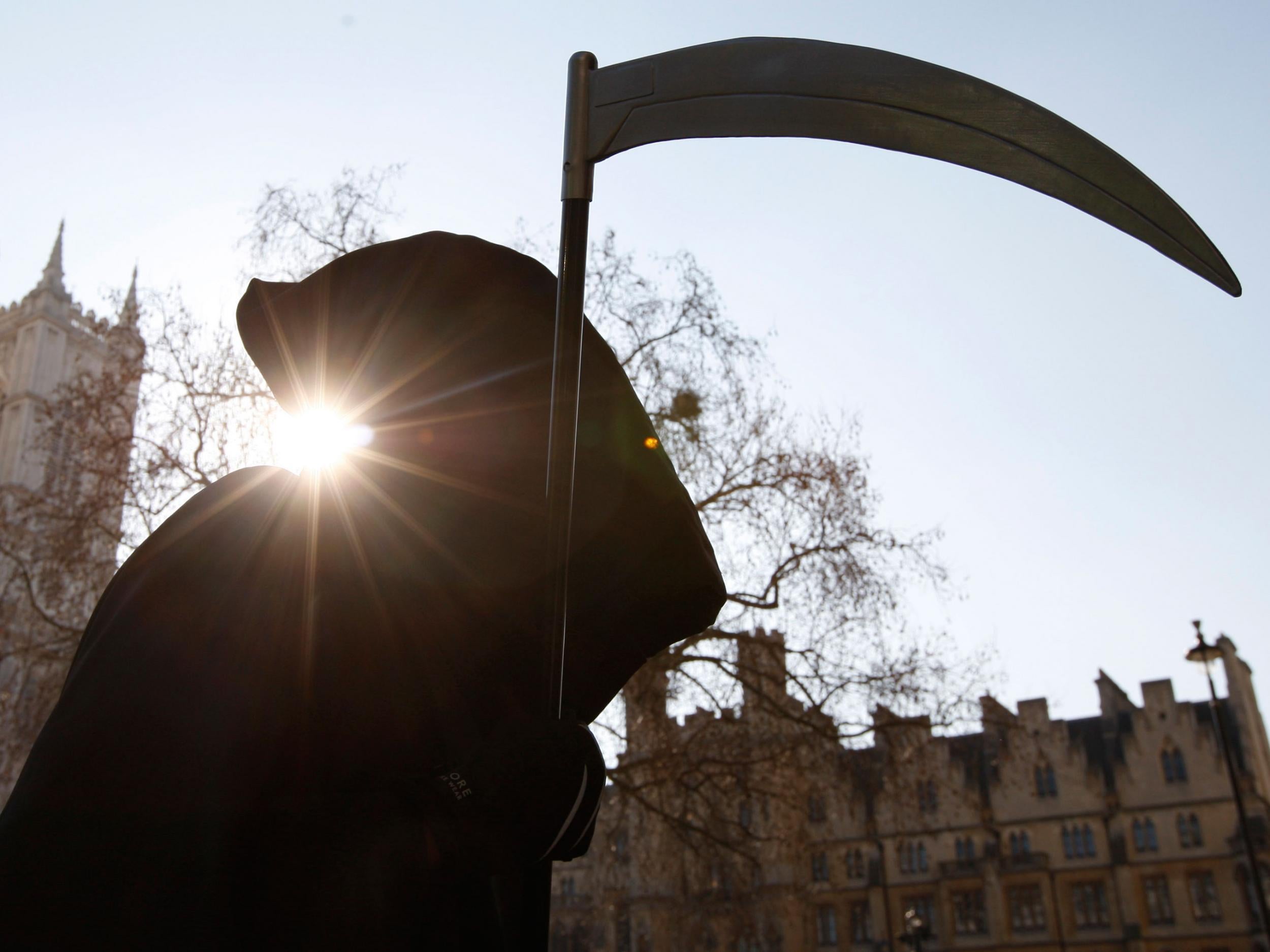Climate change doomsday warning of ‘rolling death smog’ and 'perpetual war' criticised by scientists
An article attempting to describe global warming's worst-case scenario is attacked for painting an 'overly bleak picture by overstating some of the science'

Your support helps us to tell the story
From reproductive rights to climate change to Big Tech, The Independent is on the ground when the story is developing. Whether it's investigating the financials of Elon Musk's pro-Trump PAC or producing our latest documentary, 'The A Word', which shines a light on the American women fighting for reproductive rights, we know how important it is to parse out the facts from the messaging.
At such a critical moment in US history, we need reporters on the ground. Your donation allows us to keep sending journalists to speak to both sides of the story.
The Independent is trusted by Americans across the entire political spectrum. And unlike many other quality news outlets, we choose not to lock Americans out of our reporting and analysis with paywalls. We believe quality journalism should be available to everyone, paid for by those who can afford it.
Your support makes all the difference.As doomsday prophecies go, it was an epic, suggesting the future could bring “perpetual war”, “a rolling death smog that suffocates millions” and “the end of food”.
But this attempt to describe global warming’s worst-case scenario by American journalist David Wallace-Wells has prompted a backlash from some of the world’s leading climate scientists.
Normally found taking on so-called ‘sceptics’ and ‘deniers’, they complained the article, this week’s cover story in New York Magazine and headlined “The Uninhabitable Earth”, was at odds with the science and would actually do more harm than good.
On the Climate Feedback website, 14 scientists rated its “scientific credibility” as low with some variously suggesting the article was “alarmist”, “unclear” or “misleading”.
Professor Michael Mann, a leading climatologist at Pennsylvania State University, wrote on Facebook that it painted an “overly bleak picture by overstating some of the science”.
“The evidence that climate change is a serious problem that we must contend with now, is overwhelming on its own. There is no need to overstate the evidence, particularly when it feeds a paralyzing narrative of doom and hopelessness,” he said.
“I'm afraid this latest article does that. That's too bad. The journalist is clearly a talented one, and this is somewhat of a lost opportunity to objectively inform the discourse over human-caused climate change.”
Professor Richard Betts, of the UK’s Met Office Hadley Centre, complained that the idea the Earth could become uninhabitable “within anywhere near the timescales suggested in the article is pure hyperbole”.
Dr Daniel Swain, of University of California, Los Angeles, was more nuanced, arguing the article “accurately describes some of the most dire consequences of unabated global warming”, but he added that it failed to explain the risk of this happening.
Amid what Mr Wallace-Wells described as “this preposterously long tweetstorm”, he interviewed Professor Mann and published a transcript of their exchange.
The journalist said he did not believe Earth would become uninhabitable by 2100, partly because “our complacency will surely be shaken before we get there”.
But he defended the tone of the article.
“I don’t think we’re doomed, just facing down a very big challenge. But I own up to the alarmism in the story, which I describe as an effort to survey the worst-case-scenario climate landscape,” Mr Wallace-Wells said.
He argued that scientists were being too cautious when explaining what might happen.
“Maybe that’s in part because scientists have been so anxious that the world — or at least the American public — not impugn their work as speculative or dangerous,” he said.
“And so scientists have felt a need to be a bit restrained in talking about what is possible. But to me it seems like it neglects a lot of really terrifying possibilities and that those possibilities are important to consider because they spur action.”
Professor Mann agreed there had been “quite a bit made about the so-called scientific reticence — the tendency for scientists in general to actually be conservative in what they state and the conclusions that they state, particularly when it involves the public sphere”.
This, he said, was due to a “combination of innate conservatism among scientists and also sort of this assault on science by climate-change deniers”.
“I think the intent of that assault has been to sort of cow scientists into retreating from the public discourse and frankly intimidating scientists into being very guarded and very conservative about their public statements. I think that’s been the intent, or one of the intents, of the fossil-fuel-industry-funded attack on climate science,” said Professor Mann, who describes this in his recent book with cartoonist Tom Toles, The Madhouse Effect.
And he said Mr Wallace-Wells had made a “very important” point in the article.
“When it comes to societal decision-making, it’s critical to not just consider the most likely impacts, but those sort of low-probability but catastrophic sort of cost scenarios,” he said.
“What we call the so-called tails of the probability distribution. The things that may not be, we can’t conclude that they’re likely, but we can’t rule them out, and if they were to happen, they would have such a catastrophic impact that it makes sense to take them into account.”
Join our commenting forum
Join thought-provoking conversations, follow other Independent readers and see their replies
Comments